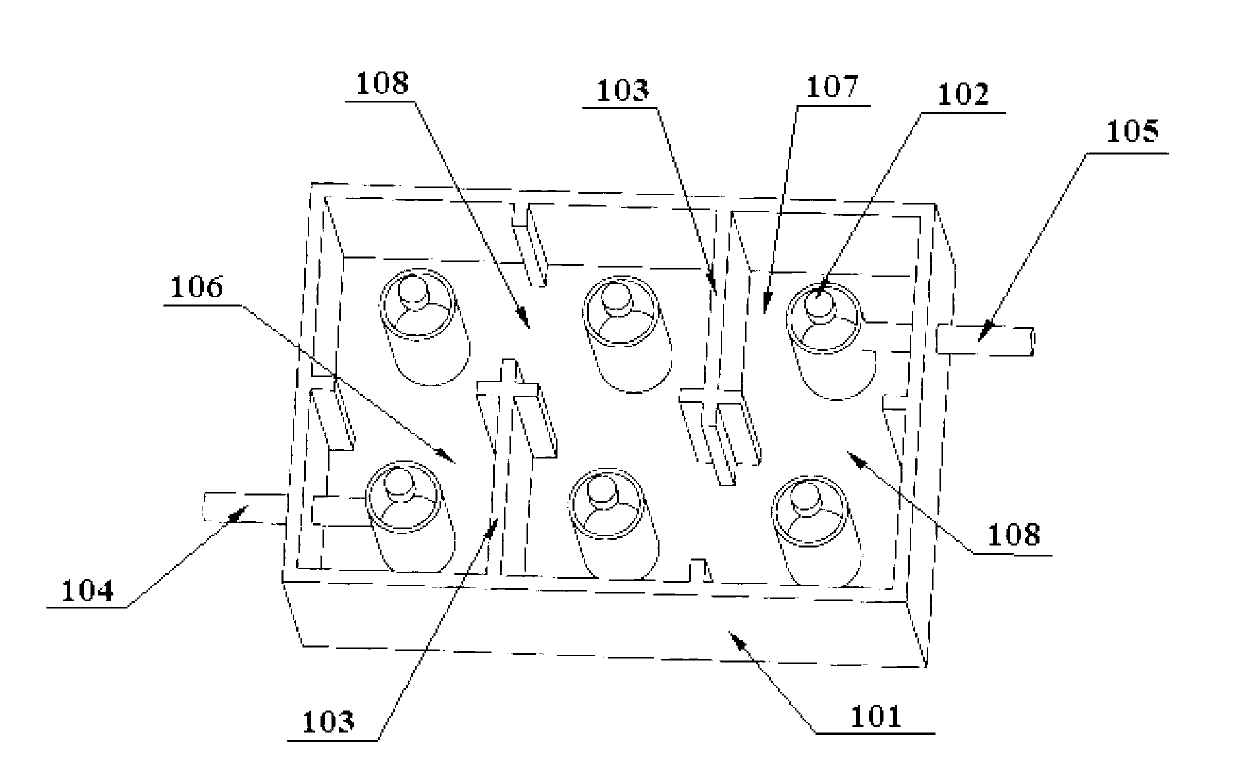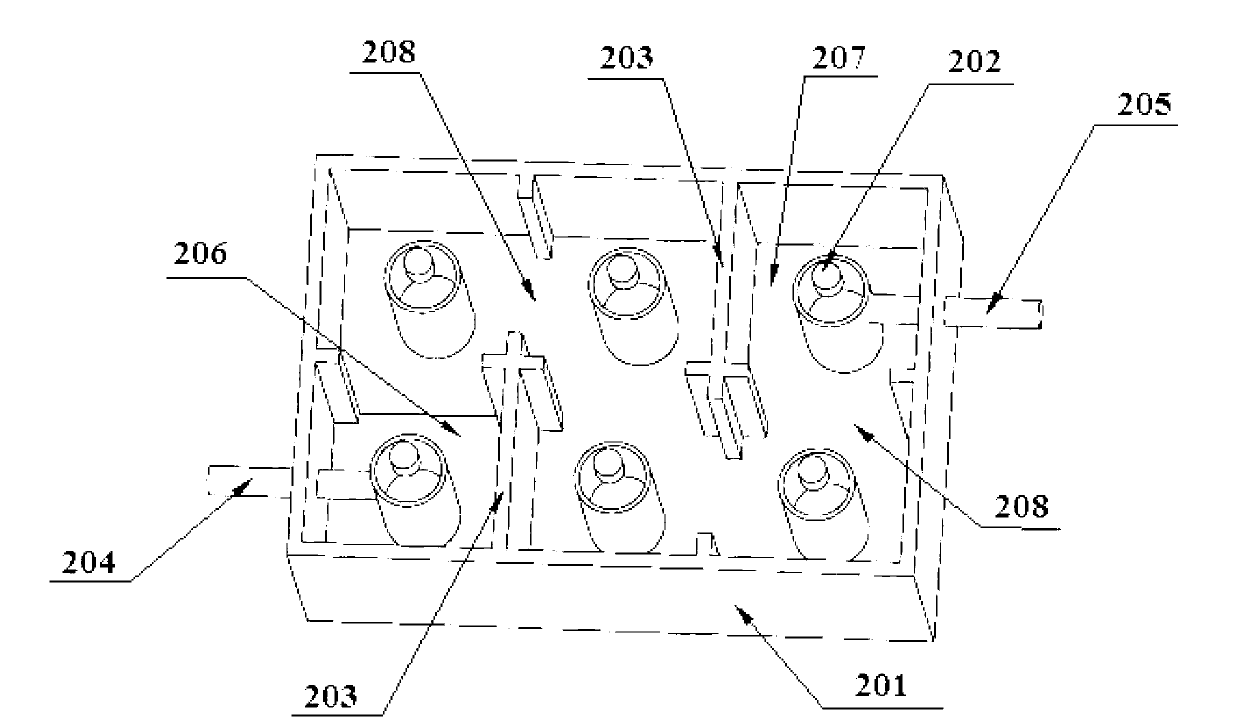Cavity filter
A cavity filter and microwave technology, which is applied in the direction of waveguide devices, resonators, electrical components, etc., can solve the problems of occupying the space of the shielding box, increasing the design cost of the filter, and affecting the filtering quality of the filter, so as to improve the remote Inhibition, the effect of a simple structure
- Summary
- Abstract
- Description
- Claims
- Application Information
AI Technical Summary
Problems solved by technology
Method used
Image
Examples
Embodiment 1
[0037] figure 2 A schematic structural diagram of the cavity filter in Embodiment 1 is shown. like figure 2 As shown, the cavity filter includes a shielding box 201 . The shielding box is a square box body. At least two resonant tubes 202 are arranged in the shielding box 201 . In the embodiment of the present invention, six resonant tubes 202 are arranged in the shielding box 201 . The number of resonance tubes 202 is set by those skilled in the art according to the design requirements or according to the technical indicators required by the system operator. The number of resonant tubes 202 in this embodiment is only exemplary, and does not limit the protection scope of the present invention.
[0038] The shielding box 201 is also provided with a partition wall 203 that isolates the inner space of the shielding box into resonant cavities with the same number as the resonant tubes. The specific arrangement is as follows: a partition wall 203 is provided between every a...
Embodiment 2
[0052] The structure of the cavity filter in the second embodiment is basically similar to that in the first embodiment, except that the depth of the tail cavity 207 is different from that of other resonant cavities. Image 6 A schematic structural diagram of the cavity filter in the second embodiment is shown. like Image 6 As shown, the depth of the first cavity 206 is the same as that of other resonant cavities. Wherein, the depth of the tail cavity 207 is smaller than the depth of the first cavity 206 and other resonant cavities, specifically, the depth difference ⊿h between the depth of the tail cavity 207 and the depth of the first cavity 206 and other resonant cavities ranges from 0 to the total depth of the resonant cavity Between 1 / 3, experiments have proved that if the difference ⊿h between the depth of the tail cavity 207 and the depth of other resonators is greater than 1 / 3 of the total depth of the resonator, the quality factor Q of the resonator will be seriousl...
Embodiment 3
[0057] The structure of the cavity filter in the third embodiment is basically similar to that in the first embodiment, except that the depths of the first cavity 206 and the tail cavity 207 are different from those of other resonant cavities: the first cavity 206 and the tail cavity 207 The depth of the first cavity 206 and the depth of the tail cavity 207 are the same in this embodiment. Figure 8 A schematic structural diagram of the cavity filter in Embodiment 3 is shown. like Figure 8 As shown, specifically, the difference ⊿h between the depth of the first cavity 206 and the tail cavity 207 and the depth of the first cavity 206 and other resonant cavities ranges from 0 to the total depth of the resonant cavity / 3.
[0058] Figure 9 The transmission response curves of the cavity filter are shown when the depths of the first cavity 206 and the tail cavity 207 are both reduced by 5 mm from the bottom of the resonant cavity. like Figure 9 As shown, the passband frequenc...
PUM
 Login to View More
Login to View More Abstract
Description
Claims
Application Information
 Login to View More
Login to View More - R&D
- Intellectual Property
- Life Sciences
- Materials
- Tech Scout
- Unparalleled Data Quality
- Higher Quality Content
- 60% Fewer Hallucinations
Browse by: Latest US Patents, China's latest patents, Technical Efficacy Thesaurus, Application Domain, Technology Topic, Popular Technical Reports.
© 2025 PatSnap. All rights reserved.Legal|Privacy policy|Modern Slavery Act Transparency Statement|Sitemap|About US| Contact US: help@patsnap.com



